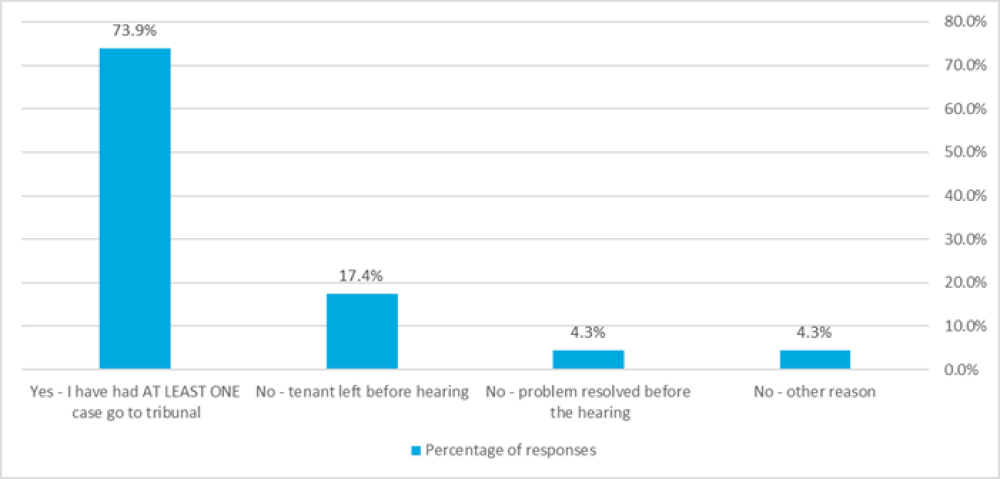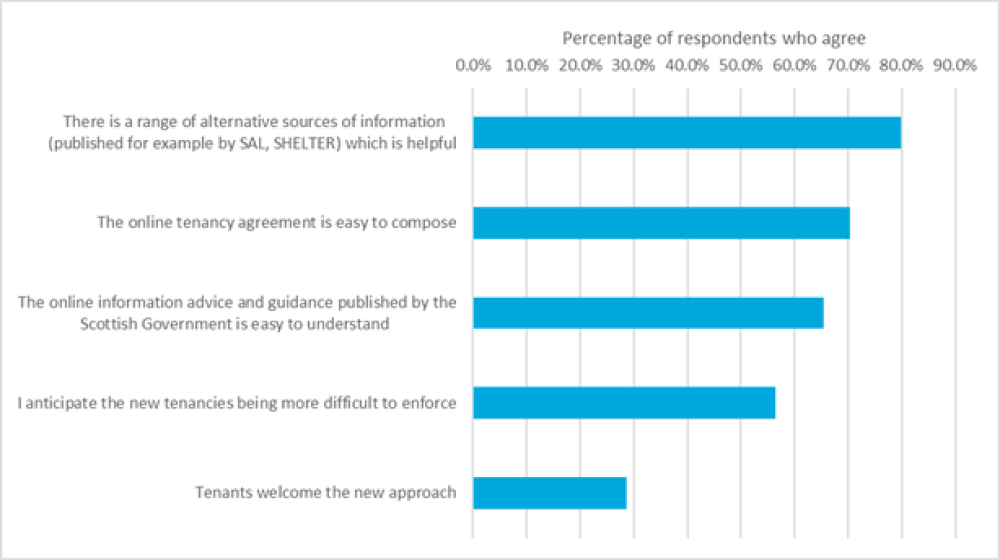

Scottish tenancy reform: Some positives with more to follow?
Scotland’s recent tenancy and possession reforms impact the lives and business of landlords, letting agents and tenants alike.
The NRLA has conducted research with the support of the Scottish Association of Landlords (SAL) in order to gauge landlord and letting agent opinions on these changes. A copy of our report can be found HERE.
The results will inform the NRLA’s campaign for a dedicated Housing Court.
Introduction
On 1 December 2017 the First-tier Tribunal for Scotland Housing and Property Chamber took over from the sheriff court in dealing with all private rented sector (PRS) disputes. Alongside the new tribunal system, the introduction of the Private Residential Tenancy (PRT) regime will lead to the eventual phasing out of the equivalent protections afforded by Section 21 in England.
Thus the Scottish experience is worth investigating: NRLA quarterly surveys, plus our survey on Section 21, highlight the urgent need for court reform in England & Wales.
Our survey
The Residential Landlords Association (NRLA) works closely with the Scottish Association of Landlords (SAL) on UK-wide issues to provide a common approach and share resources for the benefit of members.
In September 2019, the NRLA conducted a survey of SAL members to seek insight on the impact of tenancy and possession reforms on Scottish landlords.
Specifically, the survey collected landlord and letting agent opinions of (i) the new Private Residential Tenancy regime and (ii) the introduction of a dedicated tribunal system. These measures were introduced to provide both landlords and tenants with a fast-track to dispute resolution.
The survey gave landlords and letting agents a chance to state how feel about these changes.
The survey of SAL members conducted by the NRLA received 88 responses.
Tribunals and possession
Under the new tribunal system, the vast majority of respondents have not made a claim for possession. Of those who have have made a claim (remembering the sample size is small), the most common reason is rent arrears.
Claims are sifted to make sure they are not held up by minor administrative and application errors. As Chart 1 shows a high proportion of claims, once past the sifting criteria, go onto a tribunal:
Chart 1: Claims resulting in a tribunal hearing

Respondents were generally positive about the new tribunal system: over half stated that it was an improvement upon the previous court process (50.4%).
There were some concerns however: most of those who had taken a claim to tribunal felt that the new system DID NOT shorten the time between application and resolution. Nor did many agree that the system could be described as “more efficient”.
New tenancy agreements
Landlords and letting agents were asked a series of questions about the new PRT agreements: they were asked whether they have tenants signed under the new system; their views on different aspects of legislation. They were also asked whether they have sought assistance with the new processes the legislative change has brought.
A selection of responses are presented below. They show the percentage of landlords and letting agents who “Agree” or “Strongly agree” with the statements listed on the left hand side:
Chart 2: Landlord & agents' views on new tenancies

The above shows that those responding to the survey were positive on the range of available support tools – almost 80% agreeing these resources were helpful.
The majority also found the online advice easy to understand and even more – over 70% – found the online tenancy agreement easy to complete.
[Though not shown, a subsequent question revealed that around 7-in-10 had not needed additional support to use the on-line tenancy agreements which are a feature of the new system]
However, it is worth noting over half of the sample anticipate new tenancies being difficult to enforce. At the same time, fewer than 30% of respondents believed their tenants welcome the new approach.
Outcomes and impacts
One of the big concerns of the new open-ened tenancies was that tenants would take advantage and hop from location to location, causing landlords expense and bother. From our small sample however, this has not turned out to be the case, though examples do exist.
Nevertheless, almost two-thirds of those who gave a view stated they believed they were now more likely to be selective regarding their choice of tenant. Furthermore, almost half of respondents thought the new tenancies would cause a rise in rents across the PRS.
Around half of respondents did state that recent changes have made it harder for them to achieve their income/growth objectives (48.2%). Whilst most landlords have not changed their property portfolio as a result, around a quarter of landlords did say that one consequence of the new system would be that they would consider switching to short-term and holiday lets as a result.
Concluding comments
Overall, landlords and letting agents were positive about the new system. There is a general recognition that the tribunal system is an improvement and the support resources provided are useful and easily accessible.
The more negative views put forward regarding the system tended to be related to the potential impact of changes. For most, although they have signed up tenants on the new PRTs, they have not yet had to make a claim or seek possession: thus the expected difficulties of enforcement, and views on the longer term impacts of change on the sector generally can also be placed in this category.
It is possible to suggest that several of the concerns expressed by around half the landlords surveyed could be resolved over time: as (i) the process improves and (ii) experience replaces perception (though either of these of course could work in the other direction).
Finally, it goes without saying further investigation is required to assess the impact of changes on a more appropriate scale.
RLA Scottish Landlords Survey
RLA Scottish Landlords Survey
This article was written by Aidan Crehan, NRLA, the views expressed here are the author’s own and not necessarily those of the NRLA.
Thanks to Nick Clay of the NRLA on a previous draft of this article, John Stewart also gave valuable comments. SAL are also thanked for their support with the fieldwork.
Errors which remain have been made by the author.
